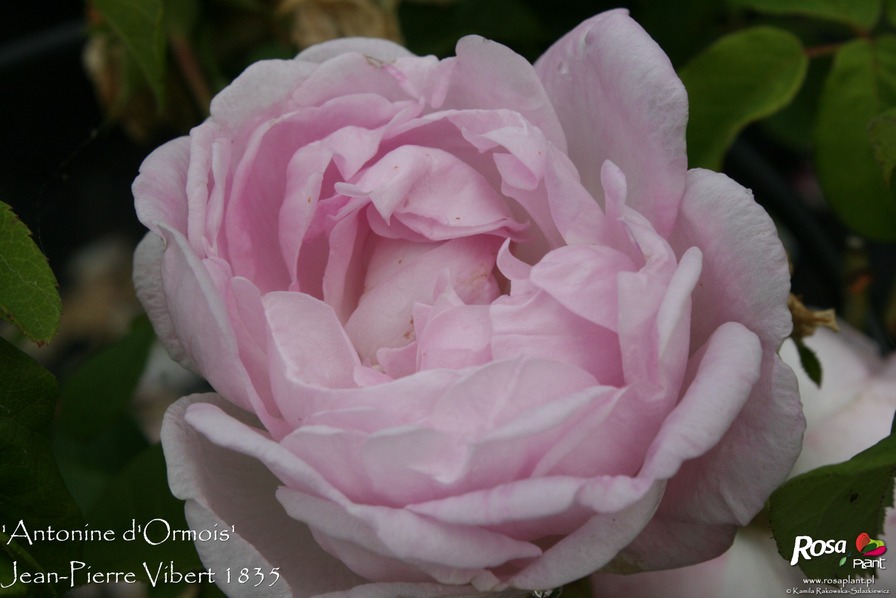'Antonia d'Ormois' rose Description

Photo courtesy of Kamila Rakowska-Szlazkiewicz Rosaplant
ARS:
Light pink.
Registration name: Antonia d'Ormois
Class:
Gallica / Provins, Hybrid Gallica.
Bloom:
Light pink. Mild fragrance. up to 40 petals. Full (26-40 petals) bloom form. Once-blooming spring or summer.
Habit:
Height: 4'11" to 6'7" (150 to 200cm). Width: up to 3' (up to 90cm).
Patents:
Patent status unknown (to HelpMeFind).
Notes:
François Joyaux states that the correct name is 'Antonine d'Ormois', and questions whether this rose should be considered a Gallica.
Vibert bred in 1823 a Gallica "Antonia", which is possibly not identical.
|